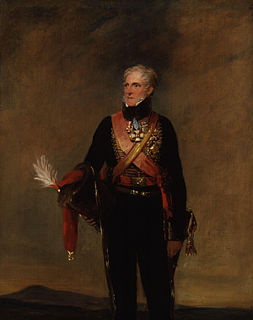 W
WHenry William Paget, 1st Marquess of Anglesey,, styled Lord Paget between 1784 and 1812 and known as the Earl of Uxbridge between 1812 and 1815, was a British Army officer and politician. After serving as a Member of Parliament for Carnarvon and then for Milborne Port, he took part in the Flanders Campaign and then commanded the cavalry for Sir John Moore's army in Spain during the Peninsular War; his cavalry showed distinct superiority over their French counterparts at the Battle of Sahagún and at the Battle of Benavente, where he defeated the elite chasseurs of the French Imperial Guard. During the Hundred Days he led the charge of the heavy cavalry against Comte d'Erlon's column at the Battle of Waterloo. At the end of the battle he lost part of one leg to a cannonball. In later life he served twice as Master-General of the Ordnance and twice as Lord Lieutenant of Ireland.
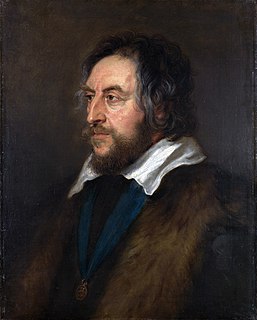 W
WThomas Howard, 14th Earl of Arundel KG, was a prominent English courtier during the reigns of King James I and King Charles I, but he made his name as a Grand Tourist and art collector rather than as a politician. When he died he possessed 700 paintings, along with large collections of sculpture, books, prints, drawings, and antique jewellery. Most of his collection of marble carvings, known as the Arundel marbles, was eventually left to the University of Oxford.
 W
WThomas Audley, 1st Baron Audley of Walden KG, PC, KS, was an English barrister and judge who served as Lord Chancellor of England from 1533 to 1544.
 W
WJohn Russell, 1st Earl of Bedford was an English royal minister in the Tudor era. He served variously as Lord High Admiral and Lord Privy Seal. Among the lands and property he was given by Henry VIII after the Dissolution of the Monasteries, were the Abbey and town of Tavistock, and the area that is now Covent Garden. Russell is the ancestor of all subsequent Earls and Dukes of Bedford and Earls Russell, including John Russell, Prime Minister of the United Kingdom and philosopher Bertrand Russell.
 W
WEdward Stafford, 3rd Duke of Buckingham was an English nobleman. He was the son of Henry Stafford, 2nd Duke of Buckingham, and Katherine Woodville, and nephew of Elizabeth Woodville and King Edward IV. Thus Edward Stafford was a first cousin once removed of King Henry VIII. He was convicted of treason and executed on 17 May 1521.
 W
WHenry Stafford, 2nd Duke of Buckingham, KG was an English nobleman known as the namesake of Buckingham's rebellion, a failed but significant collection of uprisings in England and parts of Wales against Richard III of England in October 1483. He is also one of the primary suspects in the disappearance of the Princes in the Tower.
 W
WEdward Hyde, 1st Earl of Clarendon, was an English statesman, diplomat and historian, who served as chief advisor to Charles I during the First English Civil War, and Lord Chancellor to his son from 1660 to 1667.
 W
WWilliam Cowper, 1st Earl Cowper, was an English politician who became the first Lord High Chancellor of Great Britain. Cowper was the son of Sir William Cowper, 2nd Baronet, of Ratling Court, Kent, a Whig member of parliament of some mark in the two last Stuart reigns.
 W
WAdmiral of the Fleet Andrew Browne Cunningham, 1st Viscount Cunningham of Hyndhope, was a senior officer of the Royal Navy during the Second World War. He was widely known by his initials, "ABC".
 W
WThomas Denman, 1st Baron Denman, was a British lawyer, judge and politician. He served as Lord Chief Justice between 1832 and 1850.
 W
WEdward Stanley, 3rd Earl of Derby KG was an English nobleman and politician.
 W
WHenry Stanley, 4th Earl of Derby KG was a prominent English nobleman, diplomat, and politician. He was an ambassador, Privy Councillor, and participated in the trials of Mary, Queen of Scots and the Earl of Arundel.
 W
WWilliam Cavendish, 1st Duke of Devonshire was an English soldier, nobleman, and Whig politician who sat in the House of Commons from 1661 to 1684 when he inherited his father's peerage as Earl of Devonshire. He was part of the "Immortal Seven" group that invited William III, Prince of Orange to depose James II of England as monarch during the Glorious Revolution, and was rewarded with the elevation to Duke of Devonshire in 1694.
 W
WLionel Cranfield Sackville, 1st Duke of Dorset was an English political leader and Lord Lieutenant of Ireland.
 W
WThomas Sackville, 1st Earl of Dorset was an English statesman, poet, and dramatist. He was the son of Richard Sackville, a cousin to Anne Boleyn. He was a Member of Parliament and Lord High Treasurer.
 W
WThomas Erskine, 1st Baron Erskine, was a British lawyer and politician. He served as Lord High Chancellor of Great Britain between 1806 and 1807 in the Ministry of All the Talents.
 W
WCharles FitzRoy, 2nd Duke of Grafton, was an Irish and English politician.
 W
WHardinge Stanley Giffard, 1st Earl of Halsbury, PC QC later KC was a British lawyer and Conservative politician. He served three times as Lord High Chancellor of Great Britain, for a total of seventeen years.
 W
WAlexander Hamilton, 10th Duke of Hamilton, 7th Duke of Brandon KG PC FRS FSA was a Scottish politician and art collector.
 W
WPhilip Yorke, 1st Earl of Hardwicke, was an English lawyer and politician who served as Lord High Chancellor of Great Britain. He was a close confidant of the Duke of Newcastle, Prime Minister between 1754 and 1756 and 1757 until 1762.
 W
WHenry IV was King of England from 1399 to 1413. He asserted the claim of his grandfather King Edward III, a maternal grandson of Philip IV of France, to the Kingdom of France. Henry was the first English ruler since the Norman Conquest whose mother tongue was English rather than French. He was known as Henry Bolingbroke before taking the throne. His father was Edward III's fourth son, John of Gaunt, Duke of Lancaster. His mother Blanche was the daughter of royal nobleman, Henry, Duke of Lancaster.
 W
WHenry, 3rd Earl of Leicester and Lancaster was a grandson of King Henry III (1216–1272) of England and was one of the principals behind the deposition of King Edward II (1307–1327), his first cousin.
 W
WGeorge Jeffreys, 1st Baron Jeffreys, PC, also known as "the Hanging Judge", was a Welsh judge. He became notable during the reign of King James II, rising to the position of Lord Chancellor. His conduct as a judge was to enforce royal policy, resulting in an historical reputation for severity and bias.
 W
WJohn of Gaunt, Duke of Lancaster was an English prince, military leader, and statesman. He was the third of the five sons of King Edward III of England who survived to adulthood. Due to his royal origin, advantageous marriages, and some generous land grants, Gaunt was one of the richest men of his era, and was an influential figure during the reigns of both his father, Edward, and his nephew, Richard II. As Duke of Lancaster, he is the founder of the royal House of Lancaster, whose members would ascend to the throne after his death. His birthplace, Ghent, corrupted into English as Gaunt, was the origin for his name. When he became unpopular later in life, scurrilous rumours and lampoons circulated that he was actually the son of a Ghent butcher, perhaps because Edward III was not present at the birth. This story always drove him to fury.
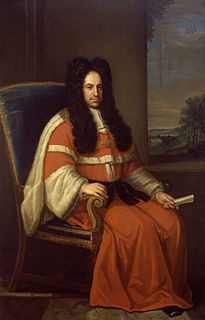 W
WPeter King, 1st Baron King, was an English lawyer and politician, who became Lord High Chancellor of Great Britain.
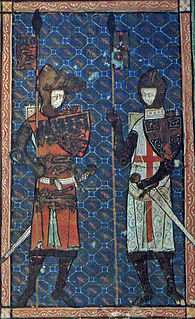 W
WEdmund Crouchback, Earl of Lancaster, Leicester, and Derby was a member of the House of Plantagenet. He was the second surviving son of King Henry III of England and Eleanor of Provence. In his childhood he had a claim on the Kingdom of Sicily; however, he never ruled there. He was granted all the lands of Simon de Montfort in 1265, and from 1267 he was titled Earl of Leicester. In that year he also began to rule Lancashire, but he did not take the title Earl of Lancaster until 1276. Between 1276 and 1284 he governed the counties of Champagne and Brie with his second wife, Blanche of Artois, in the name of her daughter Joan, and he was described in the English patent rolls as earl of Lancaster and Champagne. His nickname, "Crouchback", refers to his participation in the Ninth Crusade.
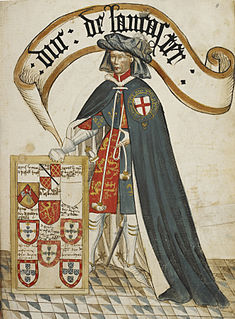 W
WHenry of Grosmont, 1st Duke of Lancaster, 4th Earl of Leicester and Lancaster, Earl of Derby, of Bolingbroke Castle in Lincolnshire, was a member of the English royal family and a prominent English diplomat, politician, and soldier. He was the wealthiest and most powerful peer of the realm. The son and heir of Henry, 3rd Earl of Lancaster, and Maud Chaworth, he became one of King Edward III's most trusted captains in the early phases of the Hundred Years' War and distinguished himself with victory in the Battle of Auberoche. He was a founding member and the second Knight of the Order of the Garter in 1348, and in 1351 was created Duke of Lancaster. An intelligent and reflective man, Grosmont taught himself to write and was the author of the book Livre de seyntz medicines, a highly personal devotional treatise. He is remembered as one of the founders and early patrons of Corpus Christi College, Cambridge, which was established by two guilds of the town in 1352.
 W
WThomas, Earl of Lancaster and Leicester was an English nobleman. A member of the House of Plantagenet, he was one of the leaders of the baronial opposition to his first cousin, King Edward II of England.
 W
WThomas Osborne, 1st Duke of Leeds,, was a prominent English politician. Under King Charles II, he was the leading figure in the government for around five years in the mid 1670s. He fell out of favour due to corruption and other scandals, and was impeached and eventually imprisoned in the Tower of London for five years until the accession of James II of England in 1685. In 1688 he was one of the Immortal Seven group that invited William III, Prince of Orange to depose James II as monarch during the Glorious Revolution. He was again the leading figure in government, known at the time as the Marquess of Carmarthen, for a few years in the early 1690s.
 W
WRobert de Beaumont, 4th Earl of Leicester was an English nobleman, the last of the Beaumont earls of Leicester. He is sometimes known as Robert FitzPernel.
 W
WSimon de Montfort, 5th Earl of Leicester, known as Simon IV de Montfort and as Simon de Montfort the Elder, was a French nobleman and famed knight of the early 13th century. He is widely regarded as one of the great military commanders of the Middle Ages. He took part in the Fourth Crusade and was one of the prominent figures of the Albigensian Crusade. Montfort is mostly noted for his campaigns in the latter, notably for his triumph at Muret. He died at the Siege of Toulouse in 1218. He was lord of Montfort-l'Amaury from 1188 to his death and Earl of Leicester in England from 1204. He was also Viscount of Albi, Béziers and Carcassonne from 1213, as well as Count of Toulouse from 1215.
 W
WSimon de Montfort, 6th Earl of Leicester, later sometimes referred to as Simon V de Montfort to distinguish him from his namesake relatives, was a nobleman of French origin and a member of the English peerage, who led the baronial opposition to the rule of King Henry III of England, culminating in the Second Barons' War. Following his initial victories over royal forces, he became de facto ruler of the country, and played a major role in the constitutional development of England.
 W
WCharles Richard John Spencer-Churchill, 9th Duke of Marlborough,, styled Earl of Sunderland until 1883 and Marquess of Blandford between 1883 and 1892, was a British soldier and Conservative politician, and a close friend of his first cousin Winston Churchill. He was often known as "Sunny" Marlborough after his courtesy title of Earl of Sunderland.
 W
WThomas Howard, 2nd Duke of Norfolk, styled Earl of Surrey from 1483 to 1485 and again from 1489 to 1514, was an English nobleman, soldier and statesman who served four monarchs. He was the eldest son of John Howard, 1st Duke of Norfolk, by his first wife, Catharina de Moleyns. The Duke was the grandfather of both Queen Anne Boleyn and Queen Catherine Howard and the great-grandfather of Queen Elizabeth I. In 1513 he led the English to victory over the Scots at the decisive Battle of Flodden, for which he was richly rewarded by King Henry VIII, then away in France.
 W
WThomas Howard, 3rd Duke of Norfolk, was a prominent English politician and nobleman of the Tudor era. He was an uncle of two of the wives of King Henry VIII, namely Anne Boleyn and Catherine Howard, both of whom were beheaded, and played a major role in the machinations affecting these royal marriages. After falling from favour in 1546, he was stripped of his dukedom and imprisoned in the Tower of London, avoiding execution when Henry VIII died on 28 January 1547.
 W
WRobert Henley, 1st Earl of Northington, PC, was the Lord High Chancellor of Great Britain. He was a member of the Whig Party in the parliament and was known for his wit and writing.
 W
WHenry George Percy, 7th Duke of Northumberland,, styled Lord Warkworth between 1865 and 1867 and Earl Percy between 1867 and 1899, was a British Conservative politician. He served as Treasurer of the Household under Benjamin Disraeli between 1874 and 1875 and was Chairman of the National Union of Conservative and Constitutional Associations from 1879 to 1883.
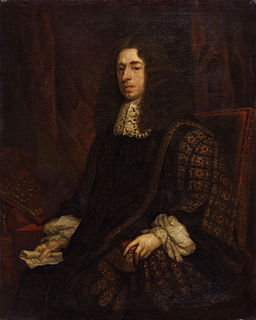 W
WHeneage Finch, 1st Earl of Nottingham, PC, Lord Chancellor of England, was descended from the old family of Finch, many of whose members had attained high legal eminence, and was the eldest son of Sir Heneage Finch, Recorder of London, by his first wife Frances Bell, daughter of Sir Edmond Bell of Beaupre Hall, Norfolk.
 W
WLieutenant-General James FitzThomas Butler, 1st Duke of Ormond, KG, PC (1610–1688), was an Irish statesman and soldier, known as Earl of Ormond from 1634 to 1642 and Marquess of Ormond from 1642 to 1661. Following the failure of the senior line of the Butler family, he was the second representative of the Kilcash branch to inherit the earldom.
 W
WJohn de Vere, 13th Earl of Oxford, the second son of John de Vere, 12th Earl of Oxford, and Elizabeth Howard, a first cousin of John Howard, 1st Duke of Norfolk, was one of the principal Lancastrian commanders during the English Wars of the Roses.
 W
WAlexander Wedderburn, 1st Earl of Rosslyn, PC, KC was a Scottish lawyer and politician who sat in the House of Commons between 1761 and 1780 when he was raised to the peerage as Baron Loughborough. He served as Lord High Chancellor of Great Britain from 1793 to 1801.
 W
WJames Edward Hubert Gascoyne-Cecil, 4th Marquess of Salisbury,, known as Viscount Cranborne from 1868 to 1903, was a British statesman.
 W
WSir George Talbot, 6th Earl of Shrewsbury, 6th Earl of Waterford, 12th Baron Talbot, KG, Earl Marshal was an English magnate and military commander. He also held the subsidiary titles of 15th Baron Strange of Blackmere and 11th Baron Furnivall. He was best known for his tenure as keeper of Mary, Queen of Scots between 1568 – 1585, his marriage to his second wife Elizabeth Talbot, as well as his surviving collection of written work.
 W
WJohn Somers, 1st Baron Somers, was an English Whig jurist and statesman. Somers first came to national attention in the trial of the Seven Bishops where he was on their defence counsel. He published tracts on political topics such as the succession to the crown, where he elaborated his Whig principles in support of the Exclusionists. He played a leading part in shaping the Revolution settlement. He was Lord High Chancellor of England under King William III and was a chief architect of the union between England and Scotland achieved in 1707 and the Protestant succession achieved in 1714. He was a leading Whig during the twenty-five years after 1688; with four colleagues he formed the Whig Junto.
 W
WEdward Thurlow, 1st Baron Thurlow, PC, KC, was a British lawyer and Tory politician who sat in the House of Commons from 1765 to 1778 when he was raised to the peerage as Baron Thurlow. He served as Lord High Chancellor of Great Britain for fourteen years and under four Prime Ministers.